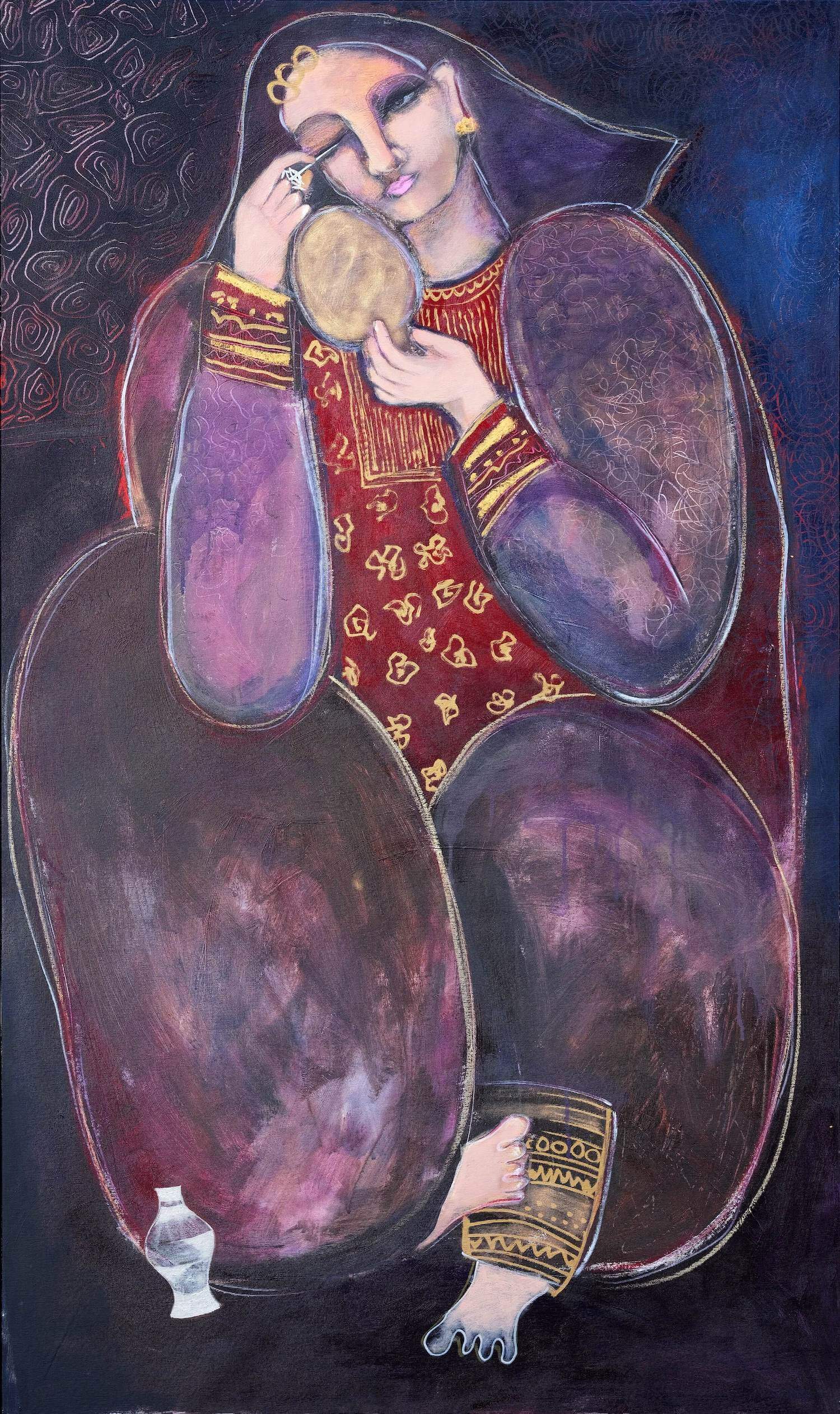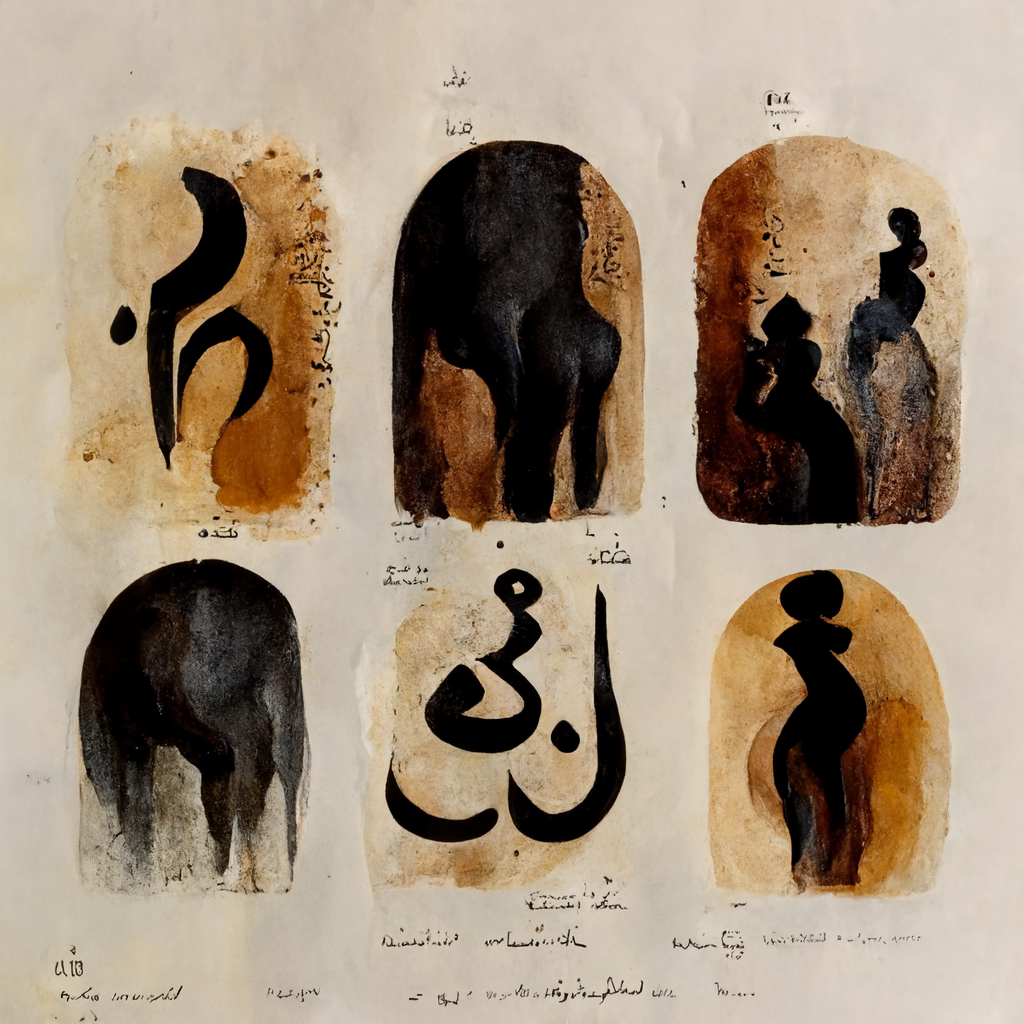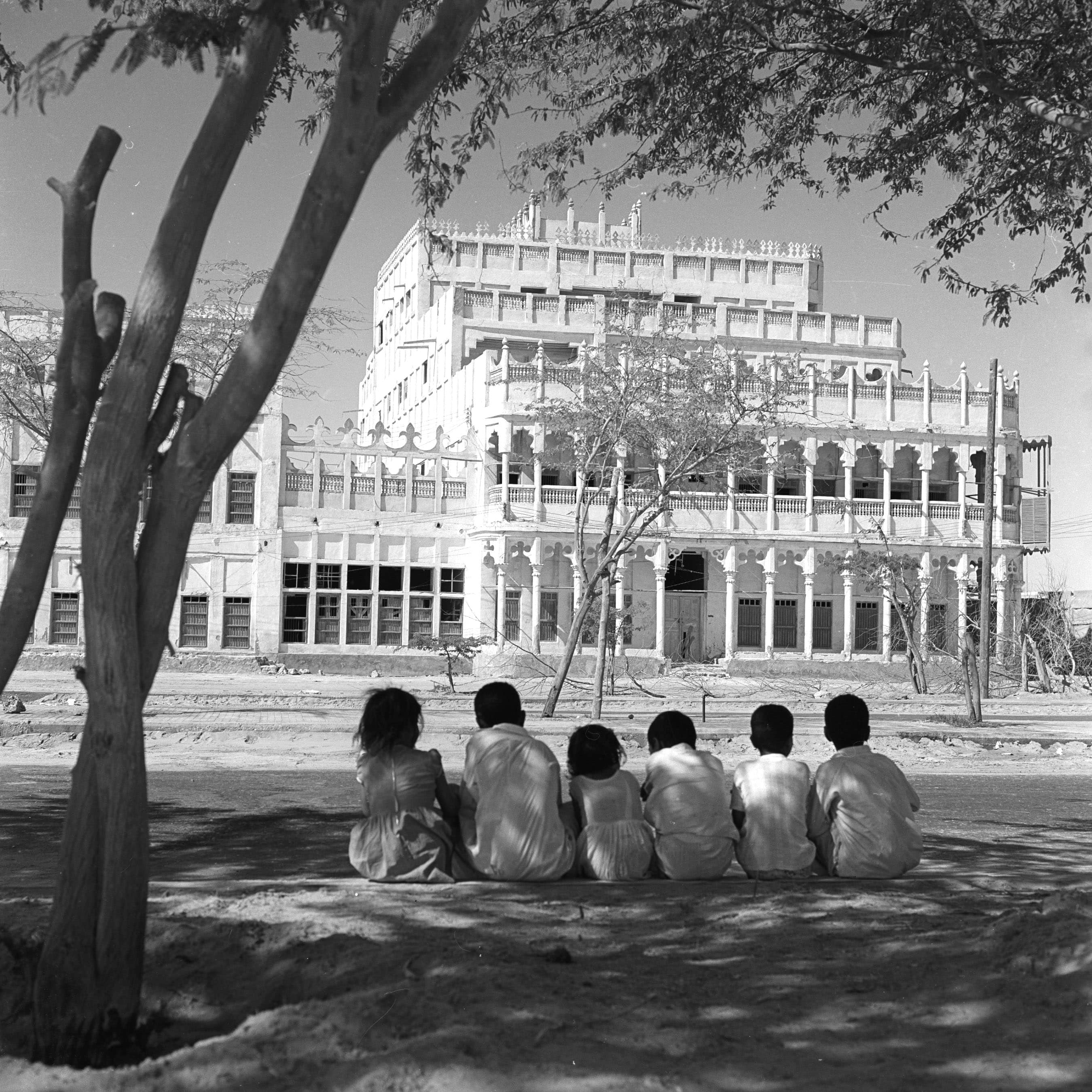150 years of connections
Vision by Horst Berndt.
H.E. Ms. Janet Alberda Ambassador of the Kingdom of the Netherlands to the Kingdom of Saudi Arabia.
The Netherlands is a rich and diverse country, ‘symbolically’ known for its windmills, tulips, and wooden shoes (Klompen). But, that is just one tiny side to a country whose history includes some of the world’s earliest intricate navigational maps, and legendary cultural figures like Rembrandt and Van Gogh and many other artists and historic figures. It regularly makes it into the top ten ‘happiest’ countries in the world, and no surprise there as it is a land of canals, cycling and flowers. It has a great appreciation for the environment and nature, andis a leader in sustainability.
The Netherlands is also known as one of the ‘Inner Six’, as it was one of the six countries to found the European Union alongside Belgium, Italy, France, Luxembourg, and (West) Germany in the 1950s.
In this special section of Ithraeyat, we meet important global figures, and have a cross-cultural conversation to inspire dialogue, reflection and friendship.
We welcome H.E. Ms. Janet Alberda Ambassador of the Kingdom of the Netherlands to the Kingdom of Saudi Arabia, and share here her views.
Q1. What does art mean to you?
For me art – apart from its beauty, the joy of exploring and stimulating your curiosity - is a bridge between cultures. Countries can differ on many aspects. I experienced that, in most situations, art really opens doors and brings people together.
For me personally, art makes me think about how we relate to and deal with each other. And, of equal importance, how we treat our environment. These interesting themes were in my mind, for example, during my latest visit to the Contemporary Art Biennale in Riyadh. I was blown away by the depth and the meaning of the artworks. Just like I am constantly amazed by my regular visits to Ithra. The art-scene in Saudi Arabia is really diverse and I feel that it has so much to offer.
Q2. Tell us about the 150 years of diplomatic presence (plus the wonderful old consulate in Jeddah al Balad!).
2022 is a very important year for us, as since this year we mark the 150 years of opening up our first diplomatic mission in the Arabian Peninsula in 1872.
The consuls brought their cameras, which was of course special at the time. They documented life in Jeddah; we could call it street photography (avant la lettre). In collaboration with the Ministry of Culture, the Netherlands consulate, Bait Hollandi, was refurbished.
Furthermore, Islamic Art specialist Dr. Luit Mols curated a permanent exhibition in Bait Hollandi called “Shared Histories”. I’m very proud of this exhibition, because on the one hand it shows what life in Jeddah was like at that time. Also, it highlights the start of our diplomatic relation and sets the stage for further strengthening the collaboration between our two countries.
How wonderful we can now take a virtual mini tour of the exhibition through Ithra magazine, thank you for this great opportunity.
Q3. Are there any Netherland Saudi Arabia current and upcoming initiatives? Any related to culture and art?
2022 is the year we kickstarted our cultural agenda. We just welcomed an incoming mission for our “Academic Dialogue” series, led by Prof. Dr. Maaike van Berkel, a historian at Nijmegen University. She came to Saudi Arabia with a group of international scholars for an archeological mission and gave a workshop and lecture about water management in the pre-modern Middle East (and suggestions for a sustainable future). We contributed to further collaboration between the Nijmegen University and both the King Faisal Center for Research and Islamic Studies and the Heritage Commission. That’s a beautiful result we are all very proud of.
Furthermore, I’m connecting with young Saudi professionals working in the cultural sector and we’re trying to facilitate cultural exchange between Saudi Arabia and The Netherlands. I was recently moved to tears, when during a Cultural Breakfast session recently, the Saudi opera singer Mohammed Khayran Al-Zahrani sang for us. Saudi creatives have a special place in my heart.
We have two cultural receptions coming up. One in the Eastern region on the 26th of October, and another one in Jeddah on the 6th of December. I’m proud to say that Ithra will host our event on the 26th of October. For that occasion we’re flying in an orchestra. In 2023, we are planning to organize a Haj themed event; with famous author Dr. Richard van Leeuwen, who translated the literary classic Arabian Nights into Dutch and wrote a book about Hajj.
Q4. Can you tell us about the famous tulip? It became an ambassador of sorts, with past rulers here fighting to get tulips to grow in their royal courts.
We are a country of tulips. My favorite tulip is the red and white Semper Augustus. In the 17th century it was rare and very expensive; it could cost as much as a house. Back then, it was a symbol of status. Now, I think it’s a gorgeous flower.
Q5. What motto do you live by?
I am an action-oriented person. We have a saying in the Netherlands that more or less translates to“don’t talk too much about it, just take action.” I think if we don’t, we are at risk of standing still. And in my personal opinion, standing still means decline. Of course it is good to stand still sometimes, and reflect, but then we will need to go forward again.
Q6. Can you show us some of your favorite art (either hanging at delegation/ or home) and tell us about it and why you like it?

Princess Beatrix by Jeroen Henneman. This painting hangs in the entrance of the Residence. I love this piece because he managed to capture her portrait and spirit perfectly with just a couple of strokes.
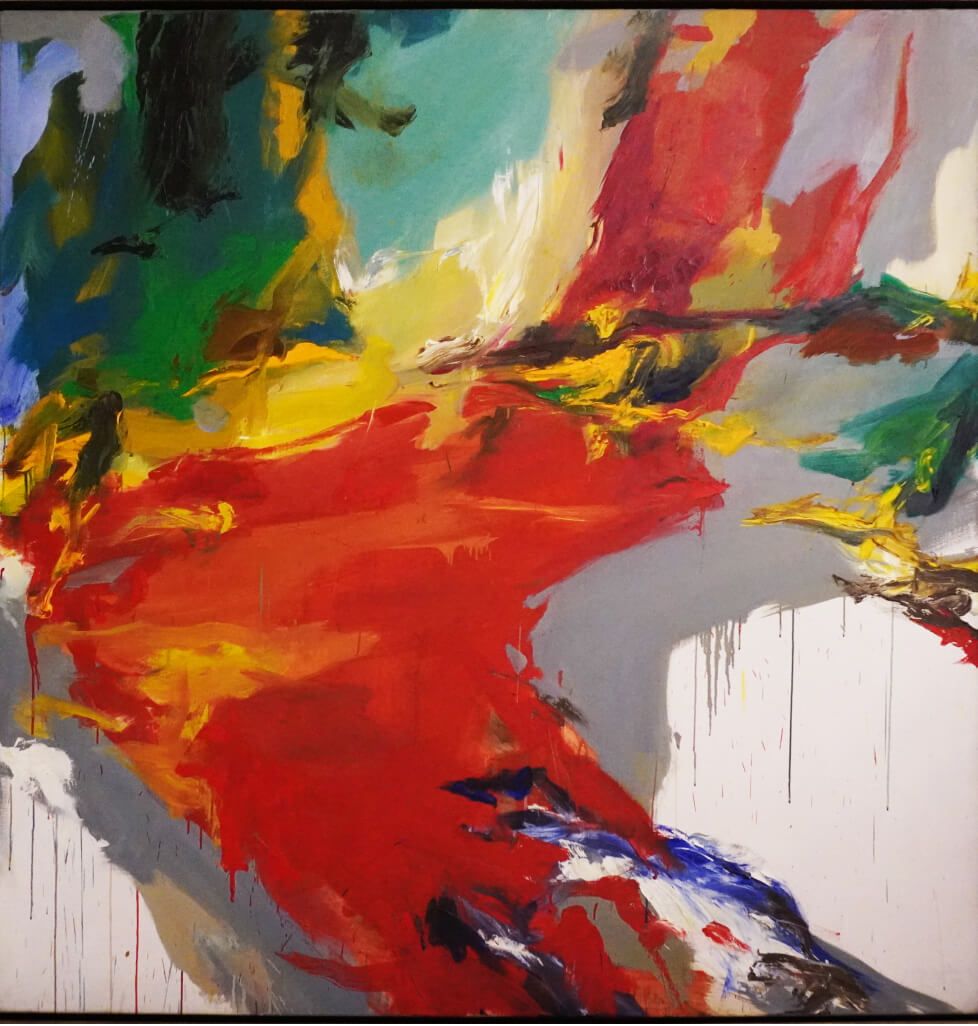
Vision by Horst Berndt. This painting hangs in my living room. I find it very interesting because I see different things at different moments of the day. A painting that never fails to inspire me! Fun fact: often I see the Arabian Peninsula.
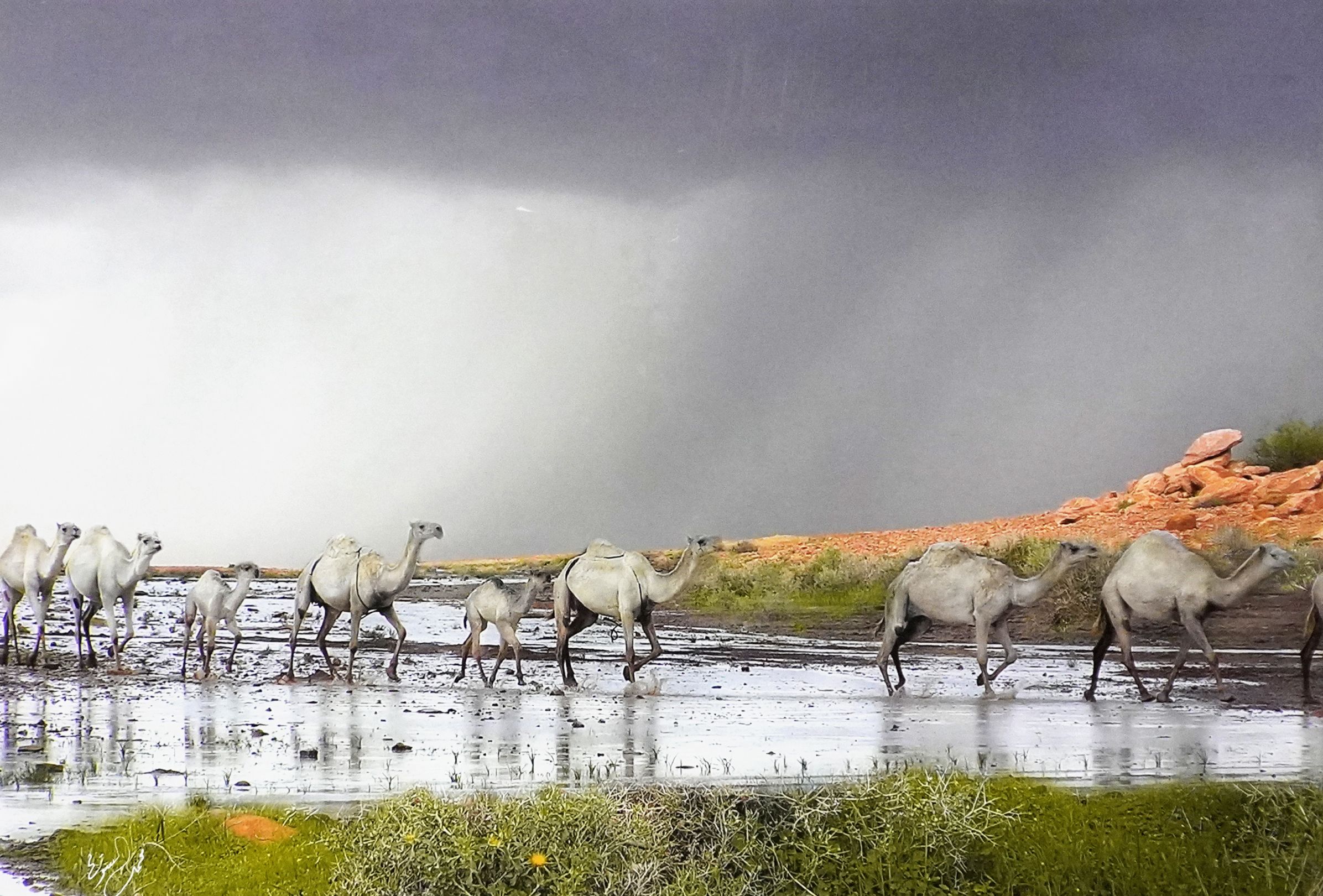
Picture of Camels. Unfortunately I don’t know the name of the artist. The position of the work in my office is just perfect. When I look up from my computer I glance at it, and it gives me a good feeling. The dark clouds remind me of autumn. A season I love. And sometimes I get the feeling that the camels are running and it gives me a sense of urgency. Does that make me a weird person?! Overall I think it’s a gorgeous photo.
Q7. Where have you visited in Saudi Arabia, and share with us one of the most memorable visits and why?
Last year I made a tour through Saudi Arabia with my two sons, Bastiaan and Jelle (22, 20 years old). We went to the lovely Farasan Islands and drove from the South to the North, to Jeddah and Al Ula. The diversity of the Saudi landscape and people amazed us. At the Farasan Islands, we camped close to the water and swam every day. An amazing memory.
Q8. Who are some of the famous artists from Netherland (past & present), who you believe are the cultural ambassadors for the nation and its creativity?
From the past, my favorites probably won’t surprise you; Van Gogh and Rembrandt. When it comes to contemporary art, I think of Daan Roosegaarde (Studio Roosegaarde). He is a Dutch artist who brings together technology and art in urban environments. I also love the work of photographer Erwin Olaf, he made portraits of our royal family in a beautiful and modern way. Last but not least, Arne Hendriks. His work revolves around sustainability. He will contribute to the coming edition of Tanween festival.
Q9. Anything else you would like to add that I may have missed to ask?
Maybe just one comment. Next to culture, our work focuses on themes like; energy transition, sustainable agriculture, circular economy and life sciences and health. All important aspects of our presence here in the Kingdom, but also top priorities for Vision 2030. A perfect match, I should say.
This exhibition takes us back in time, when the consular staff at the Netherlands consulate in Jeddah was still supervising the yearly flow of Muslim pilgrims from Indonesia between 1872 and 1949. Old black-and white photographs from Dutch libraries, museums and archives sketch a vivid picture of Jeddah as a historical pilgrims’ port and the work and lives of the consuls. Moreover, they provide a rare glimpse of daily life in Jeddah at the end of the 19th and beginning of the 20th century.
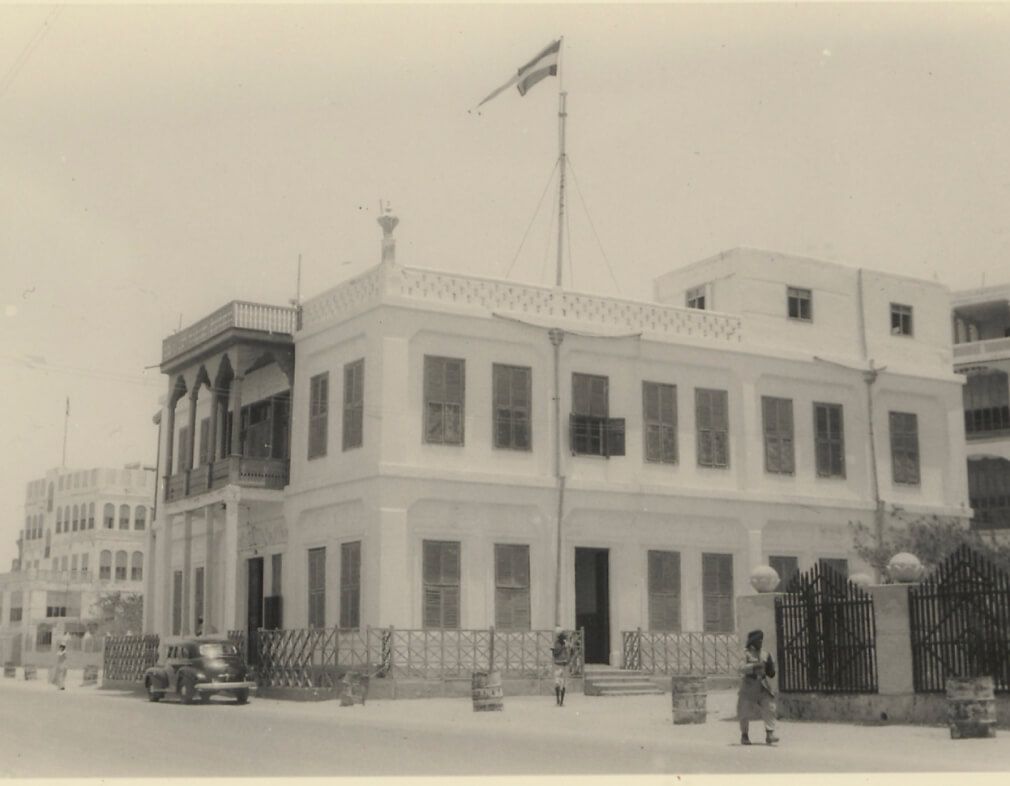
The ultra-modern Netherlands Consulate, built in 1929, was one of the earliest concrete buildings in Jeddah. Photographer Dutch Envoy Dingemans, 1939-1940, Leiden University Libraries collection.

Until 1949, all Indonesian pilgrims had to report to the Netherlands Consulate upon arrival in Jeddah and register. Identification leaves, such as this one with the name of the female pilgrim and her infant child, were kept at the Consulate. Leiden, National Museum of World Cultures collection.
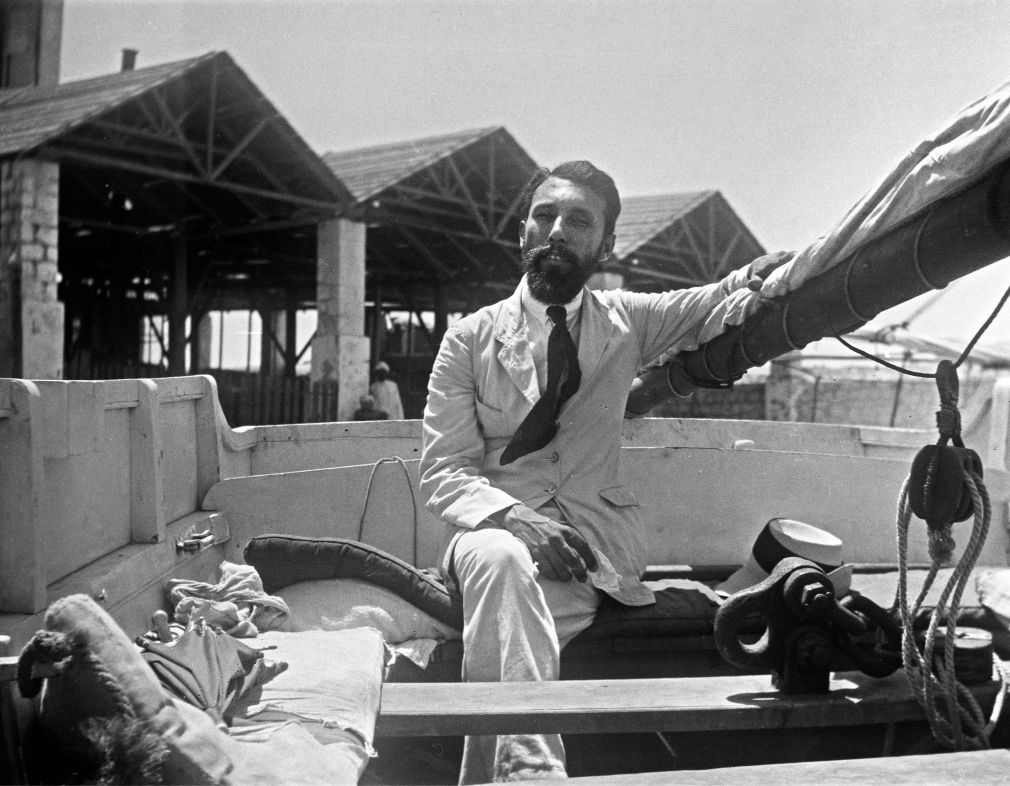
Dutch Consul van der Plas inspecting the hangars of Customs at Jeddah port where sea-faring pilgrims would first set foot on land. Unknown photographer, 1921-26. Leiden University Libraries collection.
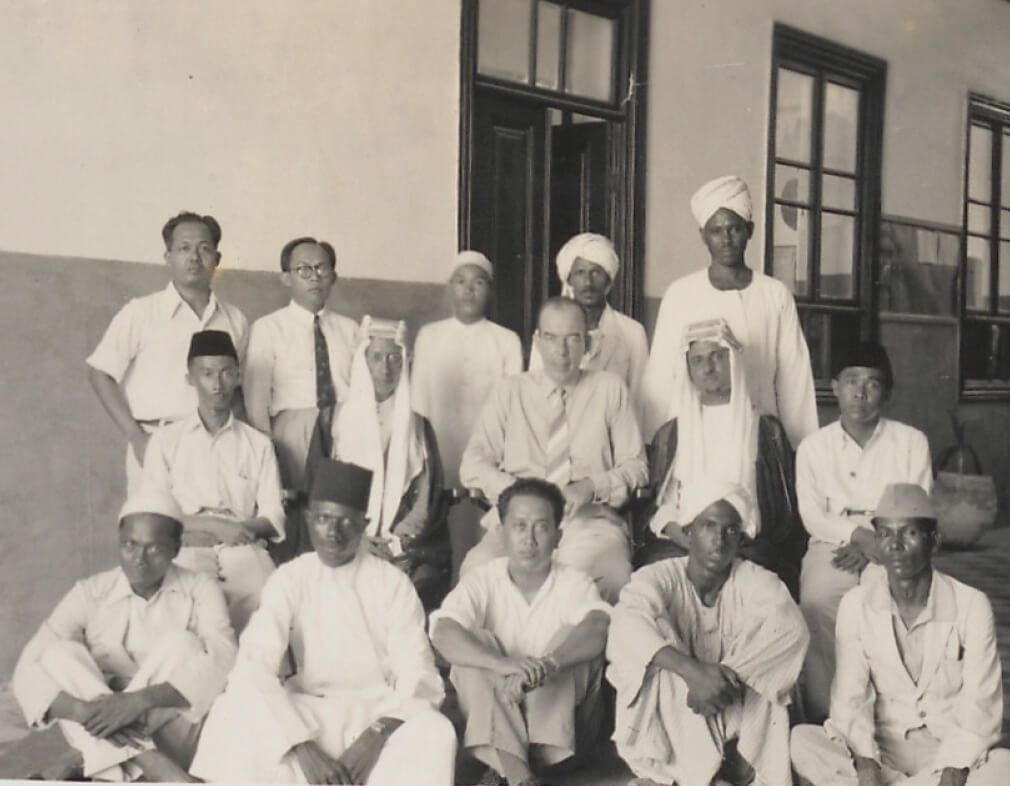
A group portrait of Chargé d’Affaires Adriaanse and his Saudi and Indonesian staff in the Netherlands Consulate in Jeddah. Unknown photographer, ca. 1939, Leiden University Libraries collection.

Indonesian pilgrims who arrived by steam liners had to disembark into sambouks to sail to Jeddah port in the shallow waters. Photographer Van Voorthuysen, 1926, Leiden University Libraries collection
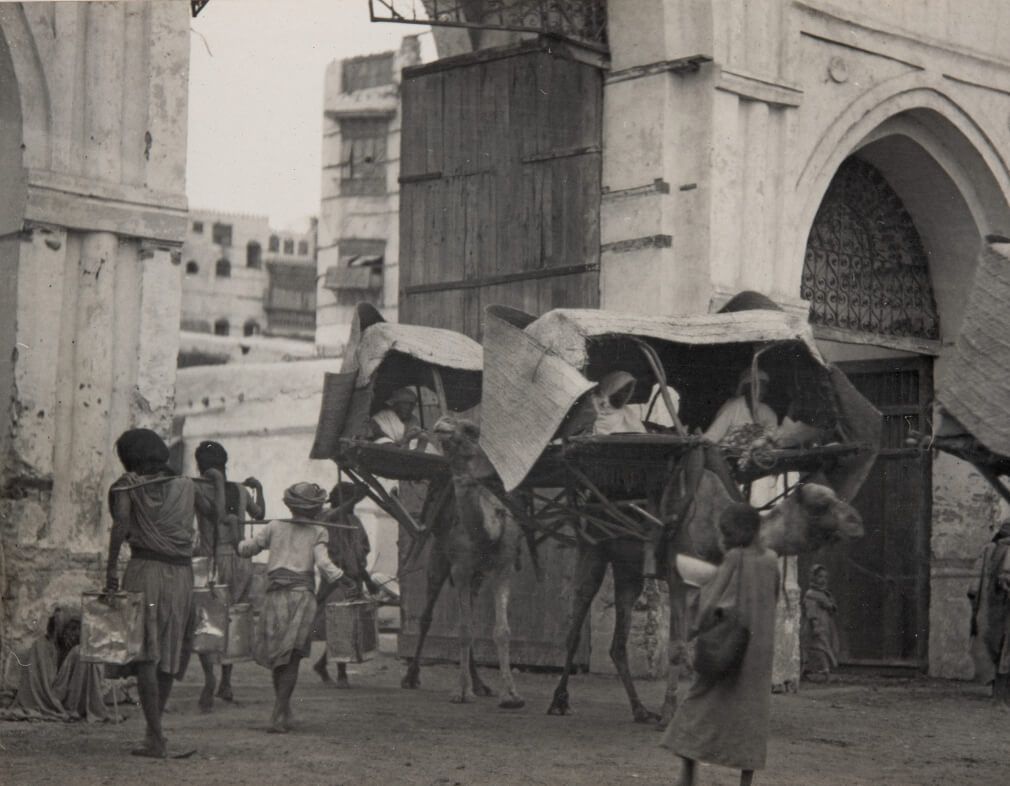
Pilgrims leaving the Mecca gate in Jeddah on their way to Mecca: some used camels laden with a litter (shuqdhuf), others went on foot. Photographer Dutch pharmacist Hendrik Tillema, 1926-27, Leiden, National Museum of World Cultures collection

The Jeddah elite and the Dutch consular staff standing at the jetty of Bab-al-Bunt, where pilgrims first arrived. Unknown photographer, 1930s, Amsterdam, National Museum of World Cultures collection
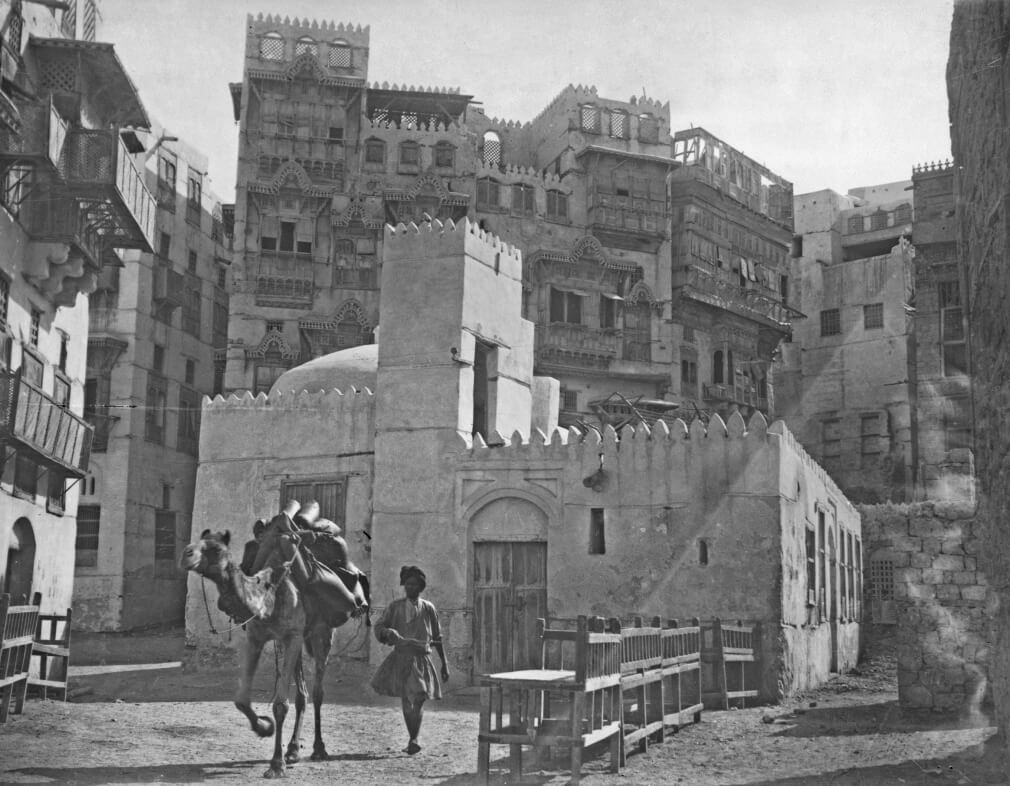
A driver escorting his camel carrying fresh water into town, amidst the high rise coral-stone buildings of al-Balad. Photographer J.A. Hooft, 1900-1911, Leiden University Libraries collection
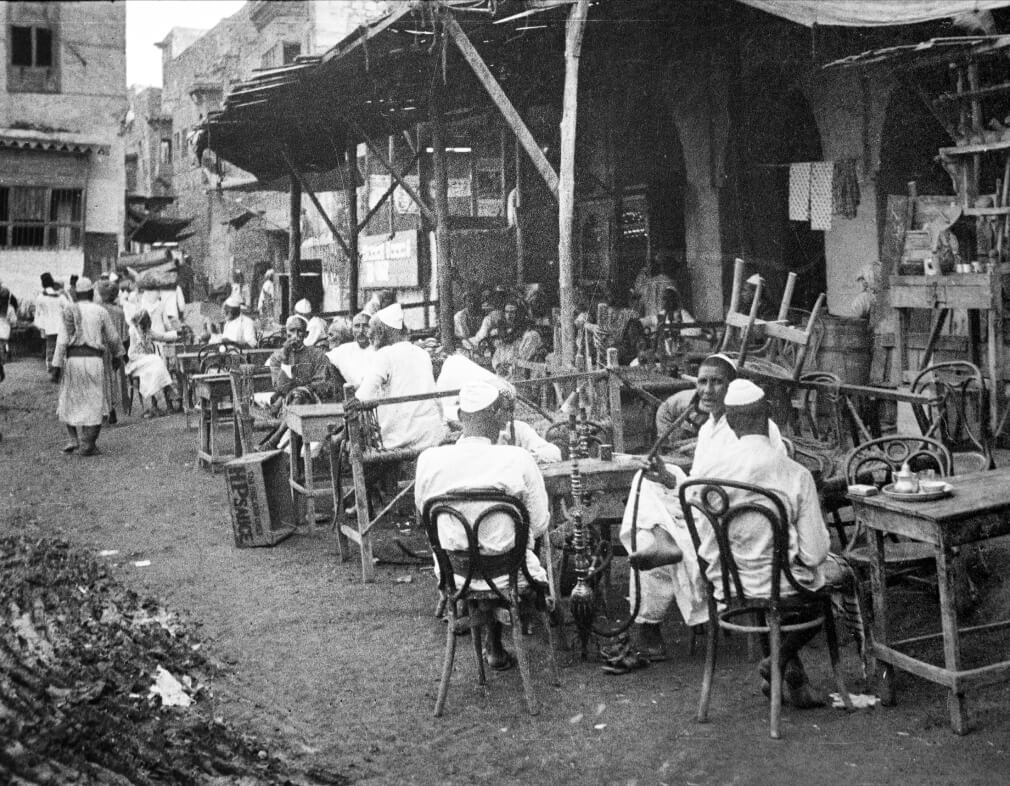
Taking a rest at one of Jeddah’s coffee shops. Photographer Dutch Consul van der Meulen, ca. 1930, Amsterdam, National Museum of World Cultures collection
